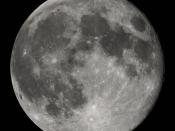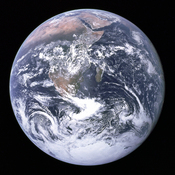Are there other planets like Earth? Are there other planets that have humans, animals, bacteria and plant-life? Everyday people wake up and begin there day with little thought of the big picture and how they are actually able to begin their day. How did this planet evolve to allow organisms and animals like ourselves to thrive and expand? The evolution of Earth to what it is today was a long and detailed process. The process started from the initial formation of the Earth and its moon. Once the Earth formed, there are several different ingredients and questions that need to be answered to understand how Earth harnesses life. How did all of our water get here? How did Earth's weather evolve and stabilize? How did its atmosphere and air develop? How does Earth have enough breathable oxygen? And lastly, how do we, along with other organisms survive without getting burned by the sun's ultra-violet rays? The answers to these questions show how Earth evolved and became habitable and offer insight to how we can detect other planets that were once habitable or are habitable in other galaxies.
This information will help us understand the big picture and how we are actually living today.
Before the explanations of how a planet actually becomes habitable scientists must first understand when the planet, in this case earth, initially formed. James Kasting and David Catling (2003) claim that with the use of radiometric dating of lead isotopes Pb207 and Pb206 show that Earth is 4.56 billion years old (430). They used lead because it was a stable product of Earth's crust and rocks containing lead can be easily attained. Radiometric dating is a technique by where geologists use the knowledge of the decay rate of lead isotopes on earth using a spectrometer to find...


